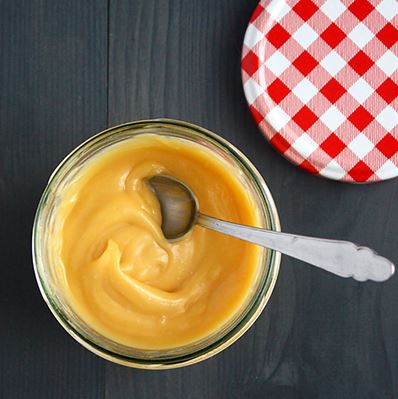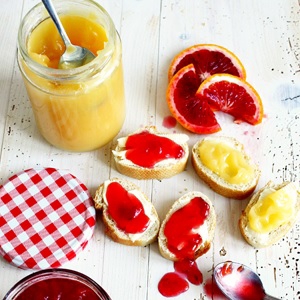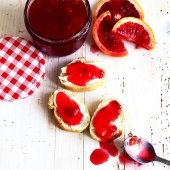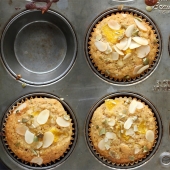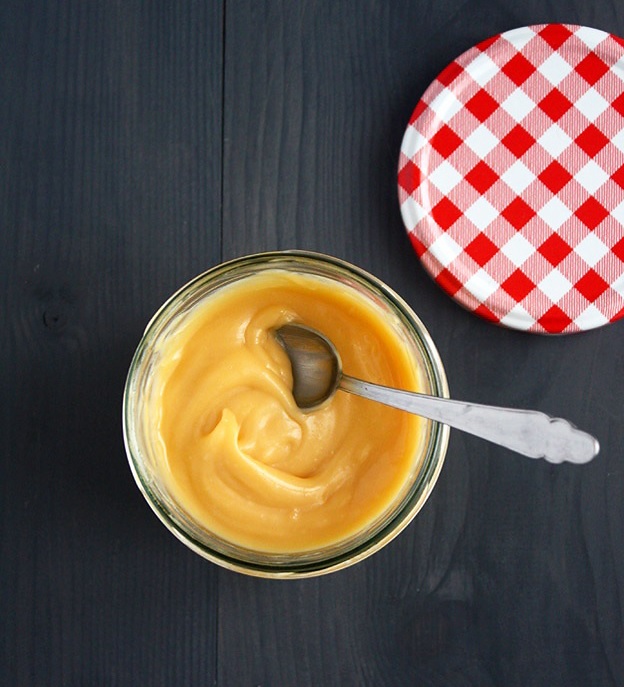
Kaya (coconut jam) is very popular in Southeast Asia, especially in Malaysia and Singapore. I came across this dreamy coconut spread in a Ya Kun Kaya Toast restaurant in Singapore, when, totally touristy, ordering a butter-kaya toast for breakfast. Sometimes travel guide suggestions really work out. Btw, there is almost equal amounts of butter in this toast as bread and Kaya, it’s really a 1/8 inch thick slice – minimum.
Usually kaya-toast is accompanied by a soft-boiled egg and soy sauce, seasoned with white pepper. If you’ve ever had the privilege of witnessing an upper class elderly Asian lady audibly slurping a watery egg right off the plate with a pinch of soy sauce and great dignity on the table next to you, then you probably know why it’s a good idea to be able to prepare and enjoy this treat at home :-). And yes, half cooked eggs are delicious, in spite of its look.
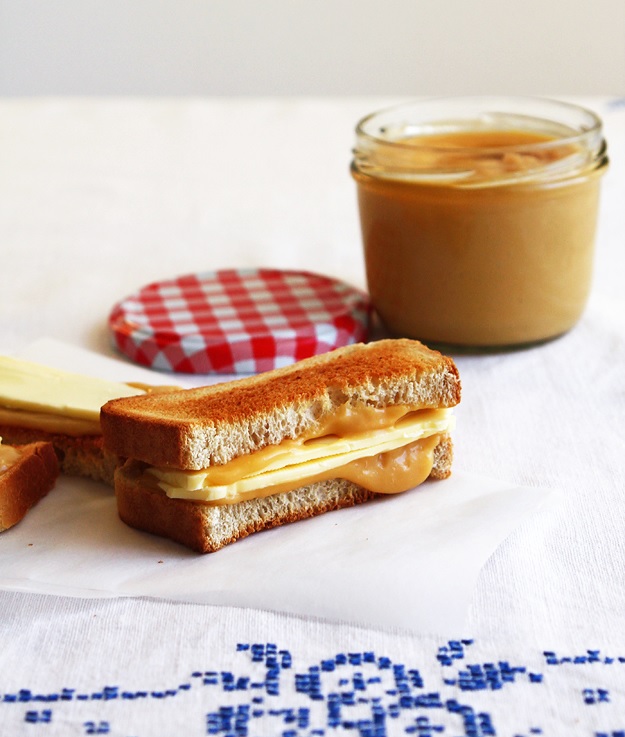
Butter-Kaya Toast. And yes, the thick butter slices are really necessary.
Anyway, despite this memorable experience, I have been obsessed with Kaya and have been cooking it many times ever since – and with this recipe, it really works. The secret is stirring, stirring and stirring, using a rubber or silicone spatula. Not only is it the best bread spread I know, but it also makes a great last-minute gift. I’m sure people will ask you for the recipe, because they got “addicted” to the stuff.
In Southeast Asia, kaya is customarily made using palm sugar, giving this coconut jam a unique caramelly taste. Palm sugar is less sweet compared to other sorts of sugar, and is available in Asian grocery stores. However, you can substitute it with brown sugar, if unavailable. Also, the color of the end result will depend on the type of sugar you are using. I used a mix of granulated sugar and light brown palm sugar for cooking the kaya shown in the picture. Enjoy!
Ingredients
- 4 large egg yolks
- 200 ml (3/4 cup + 2 tablespoons) coconut milk (no light products)
- 65 g (5 tablespoons) granulated sugar
- 30 g (3 tablespoons) light brown palm sugar, finely chopped if crystallized*
- 3 fresh pandan leaves (you can find them in Asian stores; skip if you don't
- have)
- 1 pinch of fine sea salt
>> all ingredients at room temperature
Instructions
- Separate the egg whites from the yolks and put the yolks in a bowl or a big mug. Do this thoroughly, since every tiny bit of egg white will curdle later.
- Beat eggs yolks with a fork until the yolks are combined (don't beat them foamy).
- If you use coconut milk from a can (usually 400 ml), make sure to stir well before using, because often the fatty part floats atop and you will only use half of it.
- Heat coconut milk together with the chopped palm sugar, granulated sugar, pandan leaves and salt in a double boiler or over a bain-marie. I always use a medium size pot, filled with about 1 inch of gently simmering water and place a heat-proof metal mixing bowl (e.g. stainless steel) over the pot.
- Stir constantly with a rubber spatula as the coconut milk gets hotter. When the mixture comes to a boil (or at least nearly), remove the bain-marie (including the water pot) from the heat.
- With a ladle, gradually (!) pour half of the hot coconut-milk (about 1/2 cup) into the egg yolks while constantly stirring the yolks. It is very important to do this slowly and while stirring, otherwise the yolks curdle easily. Also, if you remove the upper bowl from the bain-marie to pour the mixture, be careful not to get burnt, because the steam is very hot. That's why I use a ladle.
- Put the bain-marie with the remaining coconut milk back on the stove and gradually add the egg-milk-mixture while stirring.
- Gently cook the coconut-egg-mixture over medium heat, stirring constantly with a rubber or silicone spatula, so the kaya won't stick to the bottom of your bowl.
- Stir until the mixture thickens, about 10 to 20 minutes, depending on the heat. Don't cook it over high heat, as the yolks will curdle. The final texture should be custard-like, similar to lemon curd. The kaya will still get thicker, when it cools.
- Remove the pandan leaves and fill kaya into jars. If you see any lumps or curdled egg, press the curd through a strainer first.
- Keep coconut jam refrigerated and use within 1 week.
Notes
* In Southeast Asia, kaya is made using palm sugar, giving this coconut jam a unique caramelly taste. Palm sugar is less sweet compared to white sugar and is available in Asian grocery stores. If you can't find light brown palm sugar, you can use 20 g (2 tablespoons) dark brown palm sugar or 20 g (2 tablespoons) brown sugar instead.
Did you follow this recipe? You could share your result here. All you need to do is take a picture with your smartphone and send it to [email protected]

